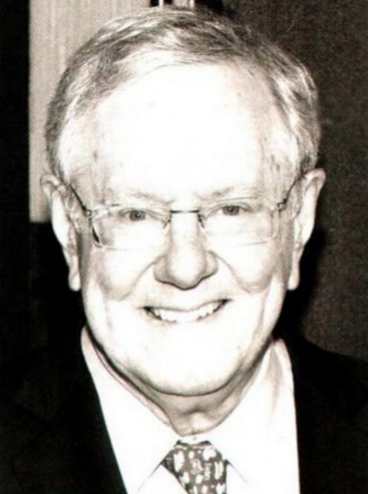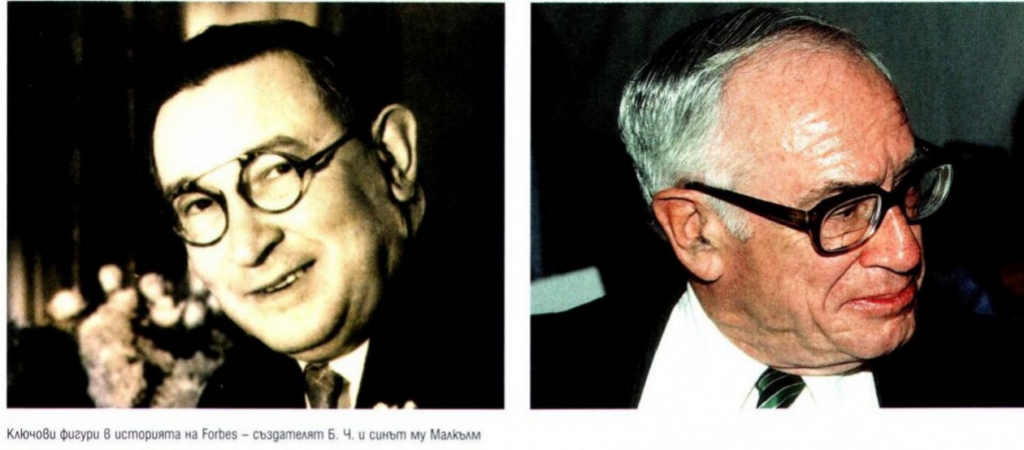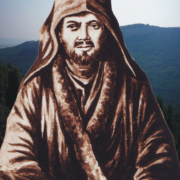Главен редактор на Любословие.bg. Доктор по научна специалност: 05.11.02 –…

Стартирането на ново издание в разгара на световна война повече прилича на лудост. Но Б. Ч. форбс (Бърти Чарлз форбс) – шестото от десет деца на шотландски шивач, отдавна горял от амбиция да стане писател на бизнес новини и в крайна сметка сам да си бъде шеф. Първоначално той заминава за Южна Африка, където работи за редактора на новото издание Rand Daily Mail – Едгар Уолъс, прочул се по-късно във Великобритания и САЩ като автор на романи. Оказало се, че Б. Ч. често пише статиите вместо своя редовно пиян шеф. Но Южна Африка била твърде малко поле за изява и през 1904 г. Б. Ч. емигрирал в САЩ. Пристигайки в Ню Йорк, той среща трудности да си намери работа, но вместо да се прибере у дома, Б. Ч. решил да предложи услугите си на един редактор безплатно за няколко седмици, за да му „покажа колко струвам“. Без да е сигурен дали няма да бъде изхвърлен, решил, че след като изтече определеното време, ще поиска заплата, но като всеки предприемач вече си давал сметка, че „нормалният“ развой на нещата няма да го доведе доникъде.
Получил работата. Изпълнен с енергия, Б. Ч. си избрал псевдоним и в същото време започнал да работи и в друго издание като автор на статии за бизнеса. Легендата разказва, че редакторите на двете издания влезли в спор кой има най-добрия бизнес репортер – и в двата случая това бил Б. Ч.
Б. Ч. става известен автор на финансови материали в цялата страна, не само като пише журналистически статии, но и като автор на книги. Но вместо само да пише за хора, които са започнали собствен бизнес, той решава да създаде своя собствена компания. Като типичен шотландец Б. Ч. мрази да не се използва целия събран материал. (Би му харесало да споделя в блог нещата, които го вълнуват.) Усеща, че е дошло време да започне и собствено издание. Първоначално то се нарича „Действащи лица и действия“ (Doers and Doings), но Б. Ч. е бил убеден да използва фамилното си име, което е обичайна практика в онези дни.
Б. Ч. Форбс дълбоко вярвал в онова, което днес наричаме предприемачески капитализъм. Той обичал да записва делата на бизнес лидерите – колкото no-смели били те, толкова по-добре. Той обаче не бил само един апологет. Негодувал срещу онези, които според него злоупотребявали със служителите или некомпетентно управлявали своите фирми. В първия брой на Forbes той написал: „Целта на бизнеса е да произвежда щастие, а не да трупа милиони“. Никога не е вярвал, че ни управляват слепи сили.
Forbes процъфтява през 20-те години на миналия век. Медийният магнат Уилям Рандолф Хърст, който е първообраз на филма на Орсън Уелс „Гражданинът Кейн“, предложил през 1928 г. да купи изданието на Б. Ч. за сума, която е еквивалентна на десетки милиони долари днешни пари. Б. Ч. гордо отхвърлил офертата. Малко след това имал достатъчно основателна причина да се запита дали не е направил катастрофална грешка.
Списание Forbes било тежко засегнато от депресията. През 1932 г. фирмата почти фалирала, тъй като рекламата намаляла с над 80%. Б. Ч. успял да запази своето творение благодарение на приходите си от свободна практика – той продължавал да пише колонки в изданията на Хърст – и създал т.нар. шотландска седмица – Всяка четВърта седмица служителите не получавали надница, В резултат на което заплатите им намалели с 25%. Но 6 онези отчаяни Времена хората се радВали просто да имат работа. Самият Б. Ч. не получаВал заплата В продължение на няколко години.
Едва оцеляло от депресията, изданието Forbes преминало през 30-те години, засенчено от BusinessWeek (собственост на McGraw-Hill) и Fortune (собственост на Time Inc.). През 1945 г. синът на Б. Ч. – Малкълм (МАЛКЪЛМ ФОРБС) се присъединил към Forbes, след като бил освободен от армията, където бил тежко ранен като картечар. Другият син, Брус, вече работел в компанията.
По онова време съдържанието на Forbes се състояло основно от статии, написани от журналисти на свободна практика. Малкълм Форбс започнал да наема редактори на пълна заетост, вярвайки основателно, че това значително ще подобри редакционния продукт. Започнал да се издава и седмичният бюлетин The Forbes Investor, който препоръчвал акции и анализирал пазарните новини от предходната седмица. Цената на бюлетина достигнала необичайните 35 долара на година (абонаментът за Forbes бил едва 4 долара или по-малко), като производствените му разходи били само част от тези на списанието. Бюлетинът незабавно пожънал успех и осигурил капитал за реорганизация на компанията.
През 1947 г. Forbes отбелязало своята 30-годишнина и завръщането си с голяма вечеря в „Уолдорф Астория“ в Ню Йорк. Губернаторът на Ню Йорк Томас Дюи произнесъл главното приветствие на вечерта и не разочаровал очакванията, заявявайки намерението си да се кандидатира за президент през 1948 г. (Макар да бил смятан за фаворит в надпреварата, в деня преди изборите списание Life публикувало снимка на Дюи с надпис: „Следващият президент на САЩ пресича с ферибот Водите на Санфранцисканския залив“ – и Дюи загубил изборите от претендента за втори мандат Хари Труман в найголямото изборно разочарование в САЩ преди шокиращата победа на Доналд Тръмп през 2016 г.)
Благодарение на редицата нововъведения редакционното съдържание на списанието се подобрило, а също и разпространението му и рекламните приходи. През януари 1949 г. Forbes започва да представя годишния си доклад за сектори и компании, изграждайки по този начин своята сила в статистиката. Традиционно януари е най-слабият месец на годината за реклама, но с излизането на този брой се превърнал в един от най-силните. През 50-те години списанието започва задълбочено да отразява процъфтяващата индустрия на взаимните фондове. Започнахме всяка година да даваме оценки за дългосрочното представяне на всеки фонд на пазарите Във Възход и на пазарите 6 спад. Независимо от горчивите спомени от депресията милиони хора отново инвестираха, тъй като икономическото им положение се подобряваше.
Дългогодишният (1961-1999 г.), брилянтен, критичен и безстрашен редактор Джеймс Майкълс допринесе повече от Всеки друг за редакционните постижения на Forbes. Прочухме се с разработването на остри статии, които оценяват компаниите така както критиците оценяват някоя театрална пиеса. Правдоподобното звучене на тези статии се дължеше на все по-доброто анализиране на корпоративните баланси по начин, по който другите издания не правеха. Ето един пример – водеща статия през 1998 г. разобличи неясните и безобразни такси, начислявани за някои застрахователни продукти, които превръщат тези популярни инвестиции в лош избор за клиентите.
Нарастващата слава на списанието се засили през 1982 г. с въвеждането на специален годишен брой на 400-те най-богати американци. Идеята е на Малкълм (бро ят 400 е Вдъхновен от т.нар. Бал на 400-те, организиран от кралицата на социалния живот в Ню Йорк – Каролин Астор, през 1892г. Известният съдия Уорд Макалистър дава израза „четиристотинте“). Малкълм форбс срещнал яростна вътрешна съпротива: как да установим кои са тези хора, след като голяма част от необходимата информация не е публична? Ако смятаме, че някой може да влезе в класацията, как да се доберем до информация за финансовите му средства? Дали нашата класация няма да ги превърне в апетитни цели за похитители, разбойници и изнудвачи? Редакционният отдел направил „проучване“ и обявил на Малкълм, че идеята му е абсолютно несъстоятелна.
„Добре – съгласил се шефът. Ще го взема и ще го направя сам. Ще наема външни хора, които ще работят с някои от нашите.“ Редакцията капитулирала. Всъщност шепата редактори и репортери, участващи в т. нар. Класация на богатите, усърдно разработвали варианти как да се доберат до привидно недостъпна информация. Оттогава Forbes непрекъснато разширява търсенето и усъвършенства методите си за събиране на данни. Първото издание постига огромен успех от редакторска и финансова гледна точка, а класациите се превръщат в един от устоите на Forbes. В основата са надеждността и иновативността. Например годишната класация „30 под 30″ на 30-те млади бизнесмени с впечатляващи постижения в 20 различни категории постига феноменален успех благодарение на Рандал Лейн – нейния създател и редактор във Forbes, както и на колегите му в редакцията.
Ключът към продължителния успех на Forbes е това, което сега наричаме „марка“. Усъвършенстването на продукта не е достатъчно, както доказа Стив Джобс с неговия почти маниакален акцент Върху елегантния и красив дизайн. През 1964 г., когато Малкълм Форбс наследява начело на компанията брат си Брус, починал от рак на 48-годишна Възраст, се увеличили усилията, които превърнали Forbes в синоним на предприемачески дух, успех и престиж по цял свят. Малкълм Форбс направил неща, които традиционният изпълнителен директор не би направил – събирал яйца на Faberge, писма на американски президенти, които имат историческо значение, ръкописи и сувенири, лодки и войници-играчки и ги изложил в музей, отворен за обществено ползване, който построил в сградата на Forbes в долната част на Пето Авеню. Придобил екзотични имоти в САЩ и по света.
Изтънчените обеди с изпълнителни директори се превърнали в обичайно събитие в къщата от кафяв камък, която е свързана със седалището на Forbes. На всеки гост се давал рекламен жест, преди да си тръгне. Сребърна чаша Tiffany, инкрустирана с името на човека и датата на обяда, на дъното с релеф на Forbes с глава на бик, била изпращана след края на обяда на всеки гост заедно с обещание, че друга такава чаша ще се пази в избата на къщата и тя ще очаква госта да се върне по всяко време, за да опита виното. Въпреки това никой никога не го е направил.
Добрите чувства, породени от подобен забавен жест, обаче невинаги траели вечно. Веднъж Малкълм поканил изпълнителния директор на една железопътна компания, с когото имали пререкания. Било време да се заровят томахавките! Нещата потръгнали добре, но няколко месеца по-късно списанието отново разкритикувало компанията. Ядосаният директор върнал чашата обратно.
През 1967 г. Forbes най-накрая успял да надвиши броя на рекламните страници от броевете през 1929 г. За да отбележи 50-ия рожден ден, Малкълм форбс вдигнал грандиозно парти в дома си в Ню Джърси. На него присъствали над 500 ръководители на най-влиятелните американски корпорации и техните съпрузи. Поздравителната реч била произнесена от вицепрезидента Хюберт Хъмфри, много либерален демократ. Но Хъмфри печели публиката с чувството си за хумор и с идеята, че правителството и бизнесът не трябва да бъдат врагове. (Малкълм се познавал с Хъмфри отпреди това и в началото на 1964 г. бил написал възторжена редакционна статия за него. Впоследствие Хъмфри споделил с Малкълм, че именно тази статия е помогнала на президента Линдън Джонсън да избере Хъмфри за свой вицепрезидент.
Forbes отпразнува и 70-годишниния си юбилей в дома на Малкълм форбс в Ню Джърси. Все още се помнят 70-те гайдари, които се спуснали по хълма, изникващи сякаш от мъглата на близката гора. Множество хеликоптери превозвали корпоративните магнати. Не е чудно, че най-големият хеликоптер е принадлежал на Доналд Тръмп.
Подобни прояви не се посрещнали с всеобщо одобрение. През август 1989 г. Малкълм Форбс организирал парти в Танжер, Мароко, за да отбележи своя 70-и рожден ден в Пале Мендуб – имот, който от Форбс били купили няколко години по-рано (и който в момента е собственост на краля на Мароко).
Въпреки че Малкълм Форбс лично е покрил разходите за тази авантюра, някои медии у дома не го пощадили – много хора имат предостатъчно идеи как да се харчат парите на другите. На някои всичко това може да е изглеждало като разточителна екстравагантност. Но точно обратното – това създава впечатлението, че Forbes е също толкова влиятелен в наши дни, както и преди десетилетия. Мнозина бизнесмени и предприемачи от развлекателния бизнес възприемат появата си на корицата на Forbes като най-ярко признание за своите постижения. Говорихме вече за марката!
Въпреки че Forbes Inc представлявал само част от размерите на медийни гиганти като Time, Dow Jones и McGraw-Hill, репутацията на списанието била по-голяма, попрестижна и по-бляскава. Списанието надминало конкурентите си Fortune и BusinessWeek по Влиянието си в света на бизнеса.
През 1992 г. Forbes отбелязва 75-годишнината си с голямо събитие в Radio City Music Hall. Най-важните моменти в него са изказванията на бившия президент Роналд Рейгън, чиято политика и изкусна дипломация бяха изиграли решаващо значение за победата в Студената война, и на Михаил Горбачов, последния лидер на наскоро разпадналия се Съветски съюз, създаден през 1917 г. – годината на основаването на списание Forbes. Каква двойка! Б. Ч. би бил горд. че творението му е надживяло творението на Ленин.
Завръщането и възходът на Forbes в периода след Втората световна война се осъществява в условията на една индустрия, чиито основи не са се променили съществено от създаването през 1843 г. на парната печатна машина, направила Възможна масовата продажба на вестници и списания. Но с навлизането на интернет настъпва краят на света на печатните издания.
Клише е да кажеш: „Трябва да преосмислиш съществуването“ или „Трансформирай своята компания все едно е стартъп“. Това е много трудно за наследниците на големите компании, затова повечето най-накрая отпадат по пътя. Мисленето до такава степен е привикнало – и обременено – да възприема света и да изпълнява задачите по определен начин. Дори когато ръководствата си дават сметка за иновациите, които променят индустриите и се опитват да се нагодят, техните реакции често са твърде бавни, лишени от въображение и под въздействие на паниката. Помислете за Kodak и възхода на цифровата фотография.
В средата на 90-те години повечето издатели смятат, че електронните публикации ще означават само възпроизвеждане на печатната страница онлайн. И почти Всеки подхожда колебливо към цялостното разработване на собствени уебсайтове. Защо да се отказват безплатно от хартиените издания? Още повече че тогава онлайн рекламата е незначителна.
За щастие, при създаването на Forbes.com през 1996 г. ние отделихме онлайн продукта от списанията – различни сгради, различни редакции, различни линии за отчет. Целта на новата дейност не беше просто да публикува онлайн това, което се е появило в списанието, а да създаде допълнително оригинално съдържание, истинска рядкост за сайтове на големите издателства. Forbes.com търпи значителни загуби в продължение на няколко години, преди да започне да носи печалби. Но в крайна сметка дойде Времето, когато дейностите трябва да се обединят. Това е нещо като преливане на кръв в културологично отношение, най-вече за двете редакции. Журналистите от печатното издание гледа] на своите колеги от дотком изданието като на селяни и позъори, които се задоволяват да произвеждат голямо по обем, но повърхностно и треторазредно съдържание. Колегите от доткома възприемаха журналистите в списанието като мързеливи сноби с незаслужено признание.
Големи промени във Forbes настъпиха през 2010 г. с идването на Луис д’Воркин като главен продуктов мениджър. Луис е имал разнообразна кариера в печата, телевизията и високите технологии.
След като Forbes купува компанията на Луис, той се съгласява да се върне(известно време е работил във Forbes). Луис има смела и оригинална визия за това, как трябва да изглежда новият онлайн свят на редакторската дейност. Той създава модел с многобройни външни автори, чийто брой днес достига около 1700 експерти в съответните области. Макар че по-голяма част от кариерата си прекарва в света на печатните медии, Луис не споделя виждането, че традиционната журналистика има монопол върху откриването и предоставянето на информация за публиката. Ако съдържанието е добро, кой го е грижа откъде идва, включително и от рекламодателите? Той смело налага т.нар. вродена реклама. Непрестанно подтикван от Луис, талантливият му екип непрекъснато разработва нови технологии и продукти, които помагат на читателите и повишават тяхната удовлетвореност от онлайн продукта.
редизвикателствата и възможностите са безкрайни, включително новият свят на мобилните устройства, да не говорим за гигантските възможности за реклама в Google и Facebook. Благодарение на Д’Воркин и неговия екип Forbes заема челните редици. Голям принос за развитието на Forbes Media през това Вълнуващо време има и пристигането през 2010 г. на Майк Пърлис като главен изпълнителен директор. Майк, който също идва извън света на Forbes, цял живот е правил кариера в издателския бизнес и има опит в основаването на компании. Преди три години ръководената от Т. Ч. Ям Integrated Whale Media Investments купува мажоритарен дял във Forbes, което позволява на компанията да продължи да развива цифровата страна на своя бизнес и да се насочи към други сфери. Днес редакцията на Forbes е по-силна от всякога.
Какво предстои? Залагаме, че през 2117 г. хората ще бъдат безкрайно по-богати и с невъобразимо по-висок жизнен стандарт, отколкото днес. И ако Forbes следва духа на своя създател, ще бъде там, за да отпразнува тази нова реалност.
Източник: Любословие по сп. Forbes – стр. 14; 16; 17; 18
Автор: СТИВ ФОРБС, ГЛАВЕН РЕДАКТОР НА FORBES
THE YEAR OF Forbes’ founding, 1917, was one of the most momentous in history. The U.S. entered the Great War, a dramatic break from our isolationist tradition. The October Communist coup in Russia brought into power the first modern totalitarian regime, one which would violently challenge the very existence of capitalism and the liberal democratic order.
To launch a new publication in the midst of a world war would strike most as folly. But B.C. Forbes, the sixth of ten children of a Scottish tailor, had long burned with ambition to become a business writer and, ultimately, his own boss. He first went to South Africa, where he worked for the editor of the new Rand Daily Mail, Edgar Wallace, who later achieved fame in Britain and the U.S. as a novelist. Many a time B.C. found himself writing editorials for his oft-inebriated boss. But South Africa was too small a pond, and in 1904 B.C. immigrated to the U.S. Landing in New York, he had a hard time getting a job, but instead of going home B.C. decided to offer his services to an editor for free for several weeks to “prove my worth.” He had no idea whether he would be tossed out when, after the allotted time, he would ask for a salary, but like any entrepreneur, he knew that doing things the “normal” way would get him nowhere. He got the job. Full of energy, B.C. assumed a nom de plume and, at the same time, obtained a job with another publication, also as a business writer. Legend has it that the two editors later got into an argument over who had the better business reporter–it was B.C. in both cases.
B.C. became a nationally renowned financial writer, not only reporting and turning out a syndicated column but also authoring books. Yet, instead of just writing about individuals who started their own firms, he itched to start one himself. And being a Scotsman, B.C. hated not using all the material he gathered. (He would have loved being able to blog to his heart’s content.) He felt the time had come to start his own publication. It was originally titled Doers and Doings, but B.C. was persuaded to use his surname, a not-uncommon practice in those days.
 Courtesy of The Forbes Archives
Courtesy of The Forbes ArchivesKey figures in the history of Forbes: founder B.C. and son Malcolm, as young men.
B.C. Forbes deeply believed in what we today call entrepreneurial capitalism. He loved chronicling the doings of business leaders–the bolder, the better. He was no apologist, however. He railed against those he felt were abusing employees or were incompetently managing their firms. He stated in the first issue of Forbes, “Business was originated to produce happiness, not to pile up millions.” He had no truck with the notion that we are ultimately governed by impersonal forces.
Forbes boomed during the 1920s. William Randolph Hearst, the media mogul who was the model for Orson Welles’ classic film Citizen Kane, offered to buy B.C.’s creation in 1928 for what today would be the equivalent of tens of millions of dollars. B.C. proudly turned him down. He soon had cause to wonder if he had made a catastrophic mistake.
Forbes was hit hard by the Depression. By 1932, the company was bankrupt in all but name, as advertising had contracted more than 80%. B.C. kept his creation alive through his freelance earnings–he was still a columnist for the Hearst papers–and by instituting what was dubbed “Scotch week”: Every fourth week employees went without a paycheck, which meant a 25% pay cut. But in those desperate times people were happy just to have a job. B.C. himself didn’t cash any of his paychecks for several years.
Barely surviving the Depression, Forbes limped along during the 1930s, overshadowed byBusinessWeek (owned then by McGraw-Hill) andFortune (Time Inc.). In 1945, B.C.’s son Malcolm (MSF) joined Forbes after being discharged from the Army, where he’d been badly wounded while serving as a machine-gunner. Another son, Bruce, was already at the company.
At the time Forbes’ content was mostly made up of freelance pieces. MSF began the process of hiring full-time editorial staffers, rightly believing that this would dramatically improve the editorial product. He also launched The Forbes Investor, a weekly newsletter that recommended stocks and analyzed the previous week’s market news. The price of the newsletter was an outlandish $35 a year (Forbes subscriptions went for $4 or less), with production costs a fraction of the magazine’s. The newsletter was an instant success and provided the capital to reorganize the company.
In 1947 Forbes marked its 30th anniversary and nascent revival with a major dinner at New York’s Waldorf Astoria. New York governor Thomas Dewey gave the evening’s major address, and he didn’t disappoint, making headlines by declaring his intention to run for President in 1948. (Although he was heavily favored to win–Lifemagazine ran a photograph of Dewey with the caption “The next President travels by ferry boat over the broad waters of San Francisco Bay” before the election–Dewey lost to incumbent Harry Truman in America’s greatest electoral upset prior to Donald Trump’s stunning 2016 victory.)
Editorial content improved, as did circulation and advertising, with a number of innovations. In January 1949 Forbes introduced what would become its annual report card on industries and companies, thereby starting the buildup of its statistical muscle. January traditionally was the deadest month of the year for advertising, but with this issue’s advent it became one of the best. In the 1950s the magazine began in-depth coverage of the burgeoning mutual fund industry. Every year we would give each fund a letter grade for long-term performance in up markets and another in down markets. Despite bitter memories of the Depression, millions of people were starting to invest again as their economic conditions got better.
The longtime (1961–99), brilliant, crusty, cowed-by-no-one editor James Michaels did more than anyone else to bring about Forbes’ editorial prominence. We developed a reputation for hard-hitting stories that evaluate companies the way critics critique a stage play. What made these pieces ring true was our growing sophistication in digging into corporate balance sheets in a way that no other publication did. One example: a cover story in 1998 exposing the obscure and outrageous fees charged by most annuities, which made this popular vehicle a decidedly poor investment for customers.
 Stephane Korb
Stephane KorbMSF with the prized eggs in his extensive Fabergé collection.
The magazine’s growing fame was accelerated in 1982 with the introduction of a special annual issue that ranked the 400 richest Americans. The idea was Malcolm’s (the “400” number was inspired by the so-called 400 Ball hosted in 1892 by New York’s social queen, Caroline Astor. Social arbiter Ward McAllister coined the phrase “The Four Hundred”). MSF met fierce internal resistance : How can we find out who these people are, since much of the necessary information isn’t public? If we think someone might qualify, how can we dig up their finances? Anyway, won’t our listing them make them targets for kidnappers, robbers and fundraisers? The editorial department conducted a “study” and told Malcolm his idea was absolutely unfeasible.
“Okay,” the boss replied. “I’ll take it out of your hands and do it myself; I’ll hire some outside staff and raid a few of yours.” Edit capitulated. In fact, the handful of editors and reporters involved in what was dubbed “The Rich List” deftly developed ways of getting seemingly unavailable information, and Forbes has been widening the search and refining the methods of mining data ever since. The first edition was a huge success, editorially and financially, and lists became aForbes mainstay. The key was and is credibility and innovation. For example, Forbes’ 30 Under 30, an annual list of 30 impressive young achievers in 20 different categories, has been phenomenally successful, thanks to Randall Lane, its originator and the editor of Forbes, and his editorial colleagues.
Key to Forbes’ continued success was what we now call “branding.” Having an ever better product isn’t enough, as Steve Jobs vividly demonstrated with his almost manic emphasis on sleek and beautiful designs. In 1964, when MSF succeeded his brother Bruce, who had died of cancer at age 48, the company accelerated moves that would make Forbes synonymous worldwide with entrepreneurial achievement, success and the good life. MSF did things no traditional CEO would do: He put together the world’s largest private collection of Imperial Easter Eggs created by the legendary Carl Fabergé for Russia’s Czars and Czarinas and members of the Russian aristocracy. Hundreds of other Fabergé pieces were also added, as were other unusual works of art. Another of MSF’s passions was collecting American presidential and historical letters, manuscripts and memorabilia. In the 1980s he built a museum on the ground floor of the Forbes Building on lower Fifth Avenue to house them all, as well as his collections of toy boats and toy soldiers–some of which were in moving dioramas, complete with rousing music–and opened the museum to the public.
The Highlander V
MSF had always been interested in sailing, and so the company bought the first of The Highlanders in 1955–and then over the years had a succession of ever more lavish and exquisitely designed vessels built. Each was used extensively to woo advertising on all levels, from ad agency personnel to the CEOs of the world’s largest corporations. From an early age, my siblings and I learned that these events had one ultimate goal: To secure ad dollars for Forbes–and we were all expected to help in this endeavor. Heads of state also came on board. In the 1980s Secretary of State George Schultz used The Highlander to conduct secret negotiations between Israeli and Arab diplomats.
Impressive properties in the U.S. and around the world were acquired, and all were relentlessly used for marketing. MSF also became famous for his hot-air balloons and motorcycles. At Château de Balleroy, a Forbes property in France, the country in which hot-air ballooning originated, Malcolm hosted an annual ballooning festival that attracted outstanding balloon pilots from around the world. He always also brought
Various Forbes hot-air balloons being inflated around the Château de Balleroy in Normandy, France.
in a number of journalists, CEOs and celebrities. Not only was there ballooning but also numerous amusement rides and food stalls, not to mention the fireworks at night. Thousands of people attended, with the festivals generating considerable international press coverage.
Elaborate luncheons for CEOs were a routine in the brownstone house connected to the Forbes company headquarters. Each guest was given an advertising pitch before leaving. A Tiffany-made silver cup, inscribed with the person’s name and the date of the luncheon and embossed on the bottom with a Forbes stag’s head, would subsequently be sent to each guest, along with the information that another such cup with the same inscription would hang in the brownstone’s wine cellar, entitling the guest to come by anytime to try the wine. None ever did.
The good feelings garnered from this kind of entertainment, however, didn’t always endure. Malcolm once invited a railroad CEO to lunch with whom he’d been exchanging barbs. It was time to bury the hatchet! The affair went well, but a few months later the magazine hit him again. The furious executive sent the cup back.
In 1967 Forbes finally surpassed the number of advertising pages it had run in 1929. To mark its 50th birthday, MSF threw a spectacular party at his New Jersey home. More than 500 leaders of America’s mightiest corporations and their spouses attended. The keynote address was delivered by Vice President Hubert Humphrey, a very liberal Democrat. But Humphrey won over the crowd with humor and the theme that government and business need not be enemies. (Malcolm had come to know Humphrey several years before and had written a glowing Fact & Comment editorial about him in early 1964. Humphrey subsequently told Malcolm that the piece had helped persuade President Lyndon Johnson to choose Humphrey as his running mate.)
Forbes also celebrated its 70th anniversary at MSF’s New Jersey home. Guests still remember the 70 bagpipers marching down a hill, seemingly coming out of the mists of the nearby woods. Scores of helicopters had ferried in the corporate moguls. No surprise, the largest chopper belonged to Donald Trump.
Such events didn’t meet with universal approbation. In August 1989 MSF gave a party in Tangier, Morocco, to mark his 70th birthday at Palais Mendoub, which Forbes had purchased years before (now, fittingly, owned by the king of Morocco). In chartered aircraft, including a supersonic Concorde, he flew in 1,000 corporate moguls and their spouses, celebrities–including his date, Elizabeth Taylor–key Forbes colleagues, personal friends and members of the media. It was quite the bash, with a fabulous fireworks extravaganza that easily outdid Macy’s legendary Fourth of July displays in NYC. The following morning guests were
 Glen Davis
Glen DavisAn equestrian exhibition at a party hosted by the king of Morocco, part of MSF’s 70th birthday celebration.
treated to an extraordinary exhibition of the king’s special horsemen, whose steads galloped down the field at a roaring pace–as their riders fired their rifles into the air and reloaded–then stopped on a dime and turned to repeat the process. Even though MSF personally footed the bills for this affair, he was excoriated in certain parts of the media at home–a lot of people are never short on ideas of how to spend other people’s money. To some outsiders, all of this looked like wasteful extravagance. It was the opposite: It created a global image for Forbes that is as powerful today as it was decades ago. Many businesspeople and entertainers regard landing on the cover of Forbes as the ultimate proof of their achievements. Talk about branding!
Although Forbes Inc. was a fraction of the size of such media powerhouses as Time, Dow Jones and McGraw-Hill, its reputation was bigger, more prestigious and more glamorous. The magazine surpassed rivals, Fortune and BusinessWeek, in the clout it exerted in the business world.
In 1992 Forbes observed its 75th anniversary with a major event at Radio City Music Hall. The highlight was addresses by former President Ronald Reagan, whose policies and adroit diplomacy had been crucial to the U.S. winning the Cold War, and Mikhail Gorbachev, the last leader of the recently defunct Soviet Union, which had been created in 1917, the same year as Forbes’ founding. What a pairing! B.C. would have been proud his creation had outlasted Lenin’s.
 Glen Davis
Glen DavisRonald Reagan, SF and Mikhail Gorbachev atForbes‘ 75th anniversary celebration. Theme: B.C. Forbes’ creation outlasted Lenin’s.
This delightful highlight almost didn’t happen, however. Just before the pair were to go on stage, Gorbachev declared that he wasn’t going to participate unless a series of last-minute demands were met, including his going on stage alone. We had repeatedly gone over the particulars of how the evening was to unfold with Gorbachev’s people, and they had repeatedly agreed to everything. After a terrifying time, we calmed the former Soviet leader down, and the event went off splendidly. In his remarks, though, Gorbachev mentioned that Steve Forbes was a good capitalist because he had exploited Gorbachev. The audience laughed, thinking he was inserting some humor, particularly after Reagan had employed plenty of it in his speech. But we, who had been behind the scenes, knew differently–Gorbachev was dead serious!
The evening was capped off with an extraordinary documentary about the economic history of the 20th century and the triumph of Western-style, democratic capitalism over Soviet-style communism, entitled Happily Ever After?Thankfully, we had put in that question mark.
Forbes’ post-WWII comeback and surge was in an industry whose fundamentals hadn’t seen much change since the invention of the steam-powered rotary printing press in 1843, which had made the mass-marketing of newspapers and magazines possible. But with the ascension of the internet, the print world was being decimated.
It’s a cliché to say, “You must reinvent yourself” or “Remake your company as if it were a startup.” This is very difficult for legacy companies to do, which is why most eventually fall by the wayside. The mind is so accustomed to–and encumbered by–seeing the world and carrying out tasks in a set way. Even when managements do recognize industry-altering innovations coming at them and try to adjust, their responses are often too slow and unimaginative, or they go into panic mode. Think Kodak with the rise of digital photography.
In the mid-1990s most publishers thought that electronic publishing meant merely reproducing the printed page online. And just about every publisher was hesitant to make a commitment to fully developing their websites. Why give away their copy for free? Moreover, online advertising was then minuscule.
At the start of Forbes.com in 1996, we fortunately separated the online product from the magazine–different buildings, different staffs, different reporting lines. The new venture didn’t just post what had appeared in the magazine; it also created a lot of original content, a true rarity for sites from legacy publishers. Forbes.com suffered considerable losses for several years before turning profitable. But the time eventually came when operations had to be combined. It was a cultural bloodbath, most particularly for the editorial departments. Print writers regarded their dot-com counterparts as peasants and poseurs, content to turn out plentiful but superficial and fourth-rate copy; the dot-com writers and editors saw print reporters and editors as lazy, overrated snobs.
My brother, Tim Forbes, who farsightedly recognized the impact the internet would have on the print world, played the indispensable role in navigating Forbes through these treacherous waters.
Big changes came in 2010 at Forbes with the arrival of Lewis D’Vorkin as chief product officer. Lewis had had a varied career in print, TV and high tech. He had been at Forbes during the 1990s and most recently had run his own startup, True/Slant, in which Forbes Inc. was a minority investor.
When Forbes, at Tim’s behest, bought out Lewis’ company, Lewis agreed to come on board. He had a daring and original vision of what the new online world of publishing should be. He created a new contributor model that today numbers some 1,700 experts in pertinent fields. Although having spent much of his professional life in the print world, Lewis didn’t share the conceit that traditional journalism had a monopoly on discovering and purveying information for its audiences. If the content was good, who cared where it came from, including from advertisers? He boldly instituted what’s called native advertising. Under Lewis’ ceaseless prodding, his talented team is constantly developing new technologies and products that help readers and enhance their online experience. The challenges–and opportunities–are unending, including the new world of mobile devices, not to mention the advertising juggernauts of Google and Facebook. But, thanks to D’Vorkin and his crew, Forbes has been in the forefront. Also helping make the company’s evolution to Forbes Media possible during this exciting time was the arrival in 2010 of Mike Perlis as CEO. Mike, who came from outside of Forbes, has a lifetime of publishing and startup experience.
Three years ago, Integrated Whale Media Investments, headed by T.C. Yam, bought a majority stake in Forbes, enabling the company to further expand on the digital side and to move into other areas. Today, Forbes editorial is stronger than ever.
What’s ahead? Here’s betting that in 2117 people will be infinitely richer with an unimaginably higher standard of living than that we enjoy today. And Forbes, if guided by the spirit of its founder, will be there to celebrate it.
Каква е вашата реакция?
Главен редактор на Любословие.bg. Доктор по научна специалност: 05.11.02 – Политология (Публична администрация) с тема на дисертационния труд: Комуникации в процеса на политиките (Изграждане на обществена съпричастност при стратегически публично-частни партньорства). Андрей Велчев е магистър по Политически мениджмънт и публични политики и магистър по Масови комуникации в Нов български университет. Автор е на множество публикации и интервюта, посветени на проблемите на комуникациите, журналистиката, маркетинга и политическите комуникации. Член е на Българското дружество за връзки с обществеността, Съюза на българските журналисти и International Federation of Journalists (IFJ)










